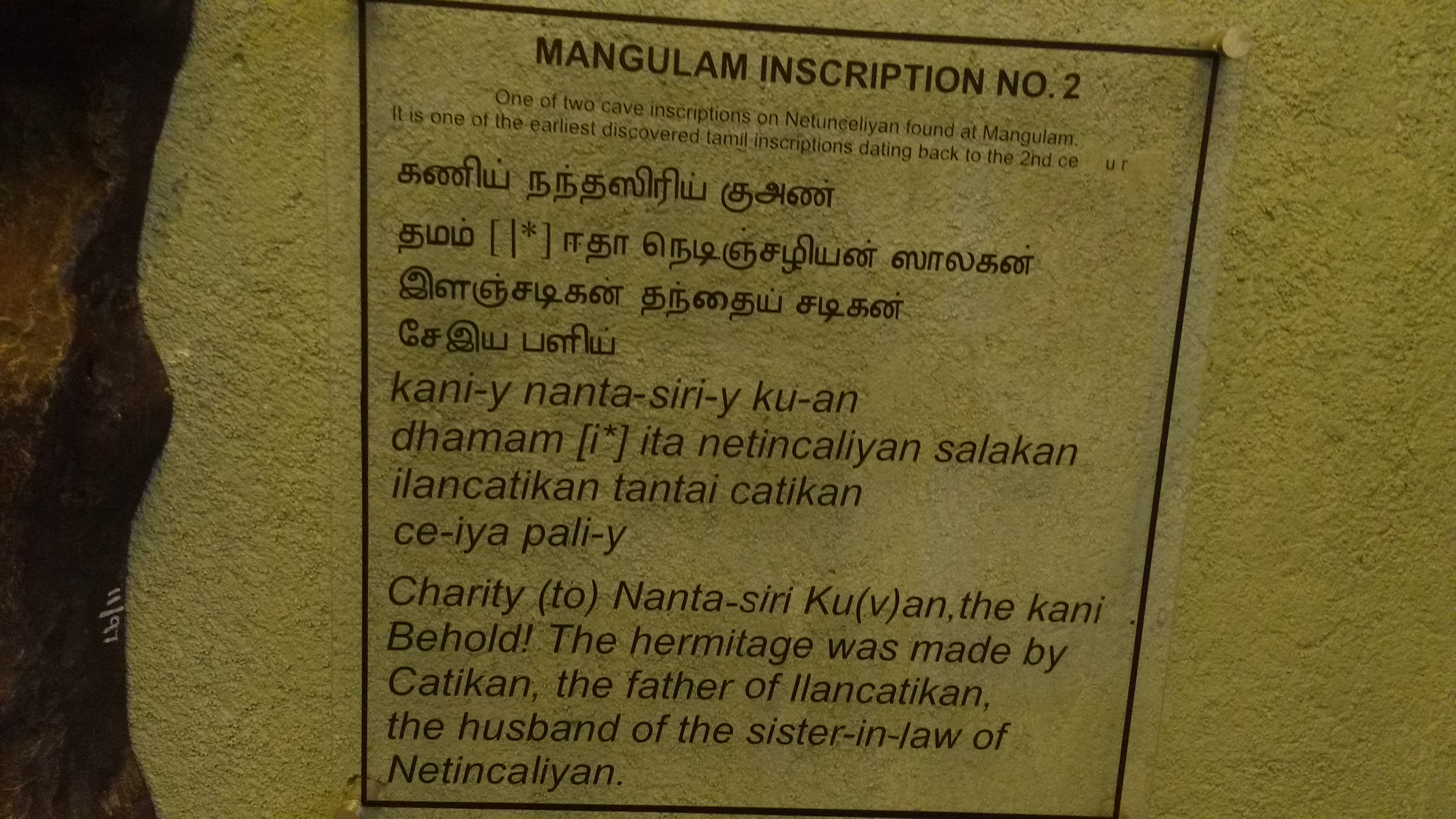Mangulam on:
[Wikipedia]
[Google]
[Amazon]


 Mangulam or Mankulam is a village in
Mangulam or Mankulam is a village in


 Mangulam or Mankulam is a village in
Mangulam or Mankulam is a village in Madurai district
Madurai district is one of the Districts of Tamil Nadu, 38 districts of the States and territories of India, state of Tamil Nadu in southeastern India., National Geospatial-Intelligence Agency, United States National Geospatial-Intelligence Ag ...
, Tamil Nadu
Tamil Nadu (; , TN) is a States and union territories of India, state in southern India. It is the List of states and union territories of India by area, tenth largest Indian state by area and the List of states and union territories of India ...
, India. It is located from Madurai
Madurai ( , also , ) is a major city in the Indian state of Tamil Nadu. It is the cultural capital of Tamil Nadu and the administrative headquarters of Madurai District. As of the 2011 census, it was the third largest Urban agglomeration in ...
. The inscriptions discovered in the region are the earliest Tamil-Brahmi
Tamil-Brahmi, also known as Tamizhi or Damili, was a variant of the Brahmi script in southern India. It was used to write inscriptions in the early form of Old Tamil.Richard Salomon (1998) ''Indian Epigraphy: A Guide to the Study of Inscription ...
inscriptions.
Information
A hill in the region which is known as Mangulam hill or Kalugumalai (eagle hill) or Ovamalai, is whereTamil Jain
Tamil Jains (Tamil Samaṇar, from Prakrit '' samaṇa'' "wandering renunciate") are Tamils from Tamil Nadu, India, who practice Jainism (Tamil ). The Tamil Jain is a microcommunity of around 85,000 (around 0.13% of the population of Tamil Nad ...
monks lived in the caves during when their religion flourished in the ancient Tamil country. They converted the caves into their ''Palli'' (monastery) and lived here from 3 BCE to the 9th century CE.
Mangulam inscriptions were discovered by Robert Sewell in the caves of the hill in 1882. This was the earliest finding of such kind of inscriptions. In 1906, Indian epigraphist
Epigraphy () is the study of inscriptions, or epigraphs, as writing; it is the science of identifying graphemes, clarifying their meanings, classifying their uses according to dates and cultural contexts, and drawing conclusions about the wr ...
V. Venkayya tried to read the inscriptions and found that it similar to the Brahmi script
Brahmi (; ; ISO: ''Brāhmī'') is a writing system of ancient South Asia. "Until the late nineteenth century, the script of the Aśokan (non-Kharosthi) inscriptions and its immediate derivatives was referred to by various names such as 'lath' o ...
in Ashokan edicts
The Edicts of Ashoka are a collection of more than thirty inscriptions on the Pillars of Ashoka, as well as boulders and cave walls, attributed to Emperor Ashoka of the Maurya Empire who reigned from 268 BCE to 232 BCE. Ashoka used the expre ...
, he thought that the inscriptions were in Pali language
Pali () is a Middle Indo-Aryan liturgical language native to the Indian subcontinent. It is widely studied because it is the language of the Buddhist ''Pāli Canon'' or ''Tipiṭaka'' as well as the sacred language of ''Theravāda'' Buddhism ...
. In 1919, epigraphist H. Krishna Sastri identified few Tamil words in the inscriptions. In 1924, K. V. Subrahmanya Aiyar discovered that inscriptions are in Tamil with some Prakrit
The Prakrits (; sa, prākṛta; psu, 𑀧𑀸𑀉𑀤, ; pka, ) are a group of vernacular Middle Indo-Aryan languages that were used in the Indian subcontinent from around the 3rd century BCE to the 8th century CE. The term Prakrit is usu ...
loan words in the Brahmi script and concluded that script is Tamil-Brahmi. In 1965, Iravatham Mahadevan
Iravatham Mahadevan (2 October 1930 – 26 November 2018) was an Indian epigraphist and civil servant, known for his decipherment of Tamil-Brahmi inscriptions and for his expertise on the epigraphy of the Indus Valley civilisation.
Early life
...
recorded the inscriptions in the caves and dated it to the late 3rd century BCE.
There are five caves in the hill of which six inscriptions are found in four caves. These were inscribed during Sangam period
The Sangam period or age (, ), particularly referring to the third Sangam period, is the period of the history of ancient Tamil Nadu, Kerala and parts of Sri Lanka (then known as Tamilakam) spanning from c. 6th century BCE to c. 3rd century CE. ...
, hence it is considered one of the important inscriptions in Tamil Nadu. The inscriptions mentions that workers of '' Nedunchezhiyan I'', a Pandyan king of Sangam period, (c. 270 BCE) made stone beds for Jain monks. It further details the name of worker for whom he made stone bed. For example, an inscription shows that ''Kadalan Vazhuthi'', a worker (பணஅன்- accountant; he was also related family) of Nedunchezhiyan made stone bed to Jain monk ''Nanda Sirikuvan''. It is the protected monuments in Tamil Nadu by the Archaeological Survey of India
The Archaeological Survey of India (ASI) is an Indian government agency that is responsible for archaeological research and the conservation and preservation of cultural historical monuments in the country. It was founded in 1861 by Alexande ...
.
Archeologists found sherd
In archaeology, a sherd, or more precisely, potsherd, is commonly a historic or prehistoric fragment of pottery, although the term is occasionally used to refer to fragments of stone and glass vessels, as well.
Occasionally, a piece of broken p ...
s, sling stones and an ancient burial site during the excavation in the region. In 2007, Tamil Nadu Archaeology Department excavated the ruins of the Jain prayer halls of Sangam period.
References
{{Madurai district Villages in Madurai district Archaeological sites in Tamil Nadu Jain rock-cut architecture Tamil Brahmi script Hills of Tamil Nadu Caves of Tamil Nadu 2nd-century BC Jain temples